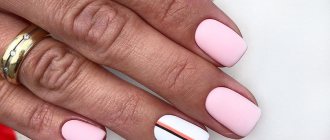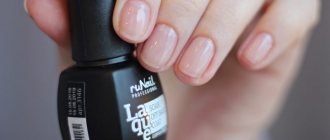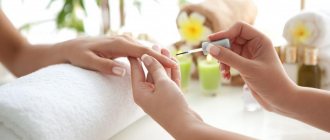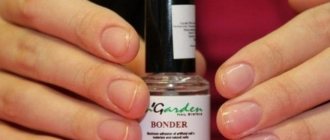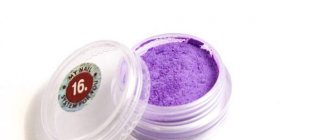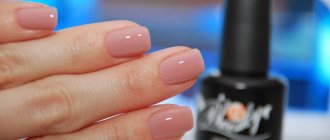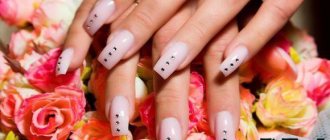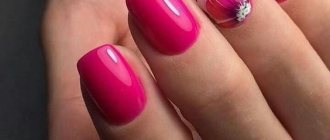Today we will look at what layers of coating are in manicure and how to apply them correctly. Coating is an important concept in manicure, meaning any material that we apply to the nails. The finished manicure consists of several layers of different coatings. We'll talk about this today.
This material is a continuation of the first part, in which we talked about leveling the nail plate, preparing for applying the base coat, and looked at base coats.
Coverage areas of nail plates
Modern coated manicure is the application of several layers of materials with different functions, aimed at preserving, strengthening, and decorating the nails.
There are four coating zones on the surface of the nail and in each of them there are certain rules for positioning the brush, pressure on it and stroke speed:
The central area under the cuticle or color line . There are three ways to apply the material to the color line so as not to touch the cuticle and get streaks:
- Thin brush. Place a small amount of material on the tip of the brush and draw a line along the cuticle.
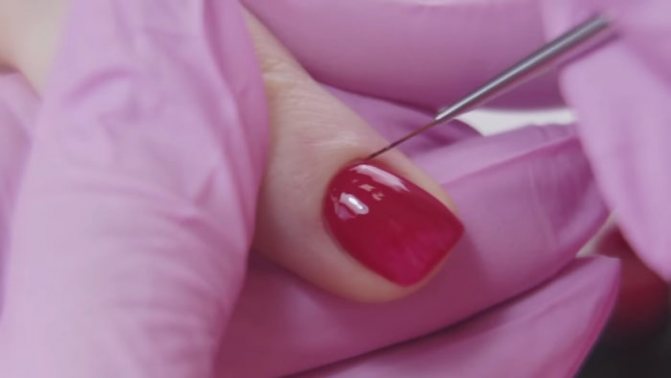
- Nudge. We place the brush almost end-to-end to the cuticle line, flatten the brush at an angle of 25 degrees and push it in 0.5 mm increments, bringing the material to the roller. The main mistake in this method of painting is to take a large amount of material on the brush and push it from afar under the cuticle with a sharp pushing movement.
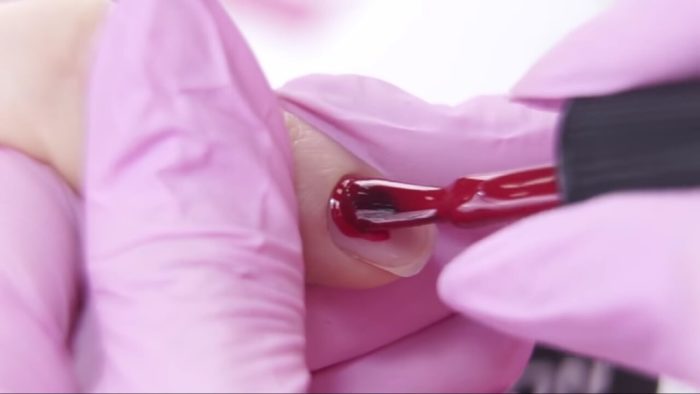
- Fan technique. We flatten the brush and place it in the sinus, move the corner of the fan of the brush along the cuticle line and go to the second sinus. Using the same pressure, draw a “fan” with the brush.
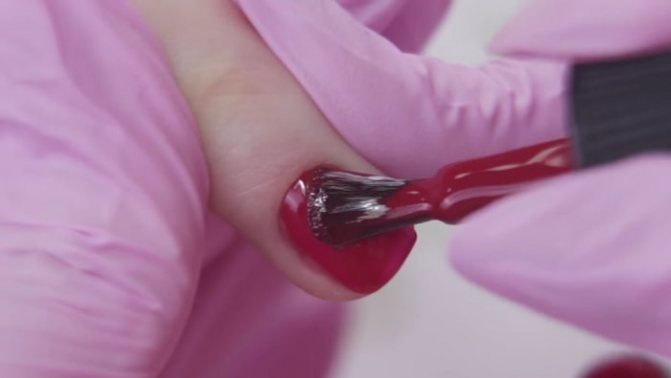
The central plane is the easiest area to paint. On the central plane, we need to hold the brush at an angle of 25 degrees while pressing the dome of the brush to flatten the brush on the surface of the nail and get a good contact area. We move along the central plane only with long movements, without interruption. When moving, the brush falls almost into the plane with the nail surface, and we pull it towards ourselves. The angle is only 3-5 degrees. You cannot lift the brush 45 degrees on the central plane and drag it towards you, as this will remove all the color behind you. Under no circumstances should you press the varnish with a brush;
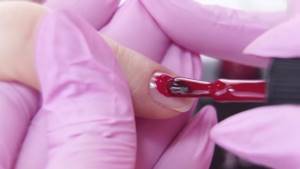
Lateral planes or slopes. To draw the side lines beautifully, you need to step back from the end line of the nail, that is, we do not place the brush end-to-end to the side, but step back 1 mm. We do this so that when pressed the brush flattens out and does not touch the periungual ridge, but rather “move up” to it. We paint with the same pressure, with one movement straight down, it is not recommended to make strokes;
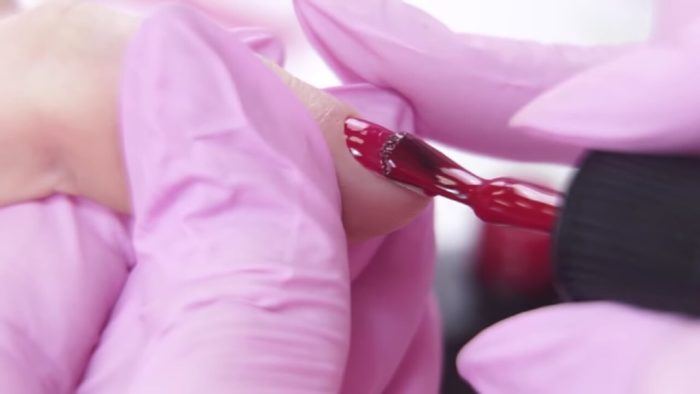
Sine turns . We place the brush diagonally at a distance of 1 mm from the turn, flatten it and paint the sinus around the circumference.
If you are not very confident with a brush, you can first carefully paint the sinuses separately, then cover the remaining areas.
Good advice - how to make your nails thicker
If your nails were thick and strong, but you ruined them with various experiments, follow a couple of tips on how to make your nails thicker:
- Give them a rest. Too frequent use of gel polishes, simple polishes or regular extensions damage the nail plate.
- Evaluate your nutrition. This is said everywhere, but the condition of your nails depends very much on your diet. Nails need calcium, so try to consume a little more of it. Do not forget that fasting leads to splitting and dryness of the nail plates.
- Baths. Baths can be used as additional care. There are many different baths for nails: with salt, with iodine, etc.
- Oils. Moisturizing oils also help strengthen the nail plate. You can apply them before bed, even on a varnished surface. You will find such oils in almost any cosmetics store and at an affordable price.
Coating layers
To obtain a beautiful and high-quality coating, it is necessary to follow the correct sequence and technique of applying materials. There are several important points to pay attention to:
Coating layers depend on:
- From the original nail architecture. If the nail plate is flat or has flaws, then the leveling layers will be denser to raise the architecture, making nails with a curve, that is, a beautiful arch. And vice versa, if the nail is without flaws, with the correct bend, then it will be enough to apply one thin layer of the base material.
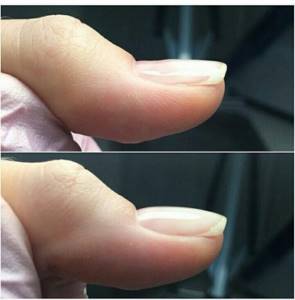
- Depending on the consistency and density of the materials used. More fluid varnishes with a medium consistency produce thinner, more elegant layers. Thicker materials adhere more tightly.
- From designrequiring fixation. The more different designs are combined on the nails, which need to be covered and secured with a top coat, the thicker the nails will be, which means, initially, the base needs to be made elegant.

Sealing the end of the free edge of the nail plate is done in the following cases:
- In various reinforcing systems, if required by the application technique prescribed in the instructions for use;
- On thin nails, if you want to protect and strengthen the free edge of the plate;
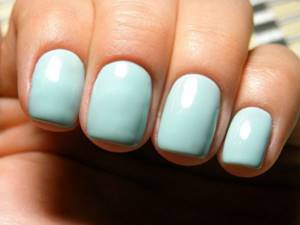
- If desired, especially if it turns out neatly. But it is best to make beautiful and correct architecture and refuse to seal it. This will make your nails look neater and more aesthetically attractive.
Coverage depth . To prevent the layers of decorative manicure applied to it from creating an unsightly “step” when a natural nail grows, you need to consider the following:
- If the sinuses are narrow and low, then the base and color are combined with the roller.
- If the sinuses are open and deep, then the base is applied by pushing it under the roller by 0.5-1 mm, and the color by 0.5 mm. We lay out the top end-to-end with the roller.
There are three main products that we apply in strict sequence - base, color and top.
Gel polish under the cuticle: pros and cons
We all remember the main and unshakable rule of manicure - when applying gel polish, you must retreat 1 mm from the cuticle area. This requirement can be explained by hygienic aspects - the cuticle zone protects the nail from harmful bacteria, and a small area of the unpainted nail, just that millimeter, guarantees that oxygen will flow to the plate, albeit in a minimal amount.
Photo from the site: taginstant.com
The second aspect of why when painting nails you need to make a minimum distance from the cuticle is aesthetic. When applying gel polishes, even by a professional master, there is always a risk of the varnish flowing onto the cuticle and staining it. Such a manicure will look sloppy, and the shelf life of such a manicure is significantly reduced due to peeling in the area of contact with the cuticle. Why does gel polish peel off at the cuticle? Yes, because the cuticle and the pterygium located near it prevent good adhesion to the nail plate.
Meanwhile, the technique of applying gel polish under the cuticle exists, and even professional artists use it. Why? Let's look at the advantages of this technique:
- Long wearing period. Nails painted under the cuticle will look as if you had recently visited a specialist for almost two weeks. The thing is that the gel polish is applied deep under the cuticle itself, which is why in the first week of such a manicure the effect is created that already colored plates are growing from under the cuticle. In the second, the gel polish is very tightly located at the very base of the cuticle, and only in the 3rd week can you see the usual picture with a standard one-millimeter indentation from the cuticle. In other words, a manicure created using this technology will last instead of the standard 3 weeks, 5, or even 6 weeks!
- Economical. This point smoothly follows from the first one - the longer you can wear a manicure, the less often you will have to make corrections, and, accordingly, resort to lower costs.
- Aesthetics. In the first weeks, a manicure under the cuticle looks seamless, without sloppy gaps that form as it grows.
Photo from the site: divanail.ru
These three points alone are enough to make you want to make a similar option. But remember - all these advantages are possible only if you or your master knows how to apply gel polish under the cuticle. Otherwise, significant disadvantages cannot be avoided:
- Uneven line at the base. It’s not enough to “drive” the gel polish under the cuticle; you need to be able to do it carefully, forming a beautiful curve, which, when grown, will look the same as neatly painted nails with gel polish at the cuticle at a standard distance of 1 mm. If the line at the base is torn and spread, then such a manicure will last only two instead of the prescribed 5–6 weeks. Those. it will have to be removed as soon as an uneven border appears.
- Decorative coating coming off. When applying gel polish under the cuticle, it is very important to remove all the pterygium located under the cuticle, which is quite problematic. If you neglect this requirement, then the manicure will not last even a week. As the pterygium grows, the gel polish will move away from the nail, and water entering under the voids will intensify the peeling process. As a result, either part or all of the decorative coating is lost.
- Sloppy look. How not to stain the cuticle with gel polish and at the same time do deep coloring is not an easy task, which definitely requires skill and perseverance. If the gel polish does leak onto the cuticle, it will definitely stain it with pigment, which will neutralize the entire effect of the manicure. Another point is that overgrown nails lose their attractive shape. Untreated corners and edges of the plates, as they grow back, “gape” with their lack of painting. And the natural slope of the nails in one direction or another will look sloppy in just three weeks.
On a note
To avoid the risk of cuticle staining, take care of a special protective agent for it in advance. Apply it in a thin layer to the cuticle, let it dry and start coloring. After you complete all the decorative work, it is enough to remove from the cuticle the thin strip formed by the protective agent, along with the remnants of the gel polish adhering to it.
- Expensive. It’s a paradox, but saving on correction, you will have to fork out for the technique of painting nails under the cuticle, which costs 10–20% more.
- Damage to the plates. The most terrible consequence. In case of inept manicure or excessive cleansing of the nail root from the pterygium, damage to the proximal zone of the nail and matrix is possible, which entails separation of the plates from the bed and the risk of infection.
But don’t be so scared of side effects; if you follow the technology and hygiene requirements, you can easily avoid these troubles.
Base coat
A single-color coating that is used as a base for decorative varnish. The base strengthens the nail plate, evens it out, protects against penetration of the pigment of colored varnish into the nail, and also ensures good interaction of the natural nail with the layers of coating and increases the wear time of decorative nail art.

Base coating - base, comes in the following types:
- Rubber . The most common composition. Rubber gives a thick, dense structure and strengthens perfectly.
- Silicone . It is easy to apply to the nail and also allows you to remove the coating in the most gentle way.
- Acrylic . Contains acrylic powder, which gives strength to nails during extensions.
- Gel or camouflage . Combines base, top and colored gel polish at the same time. It lasts much less on nails, so it is mainly used as a base for light gel polishes for easier painting.
- Vitaminized . It contains vitamins E and D. Good for damaged nails, especially after acrylic extensions.
In the article on preparing and leveling nails, we looked in detail at the technique of applying and leveling the nail plate using a base coat, so we move on to the next material.
How to make your nails thicker
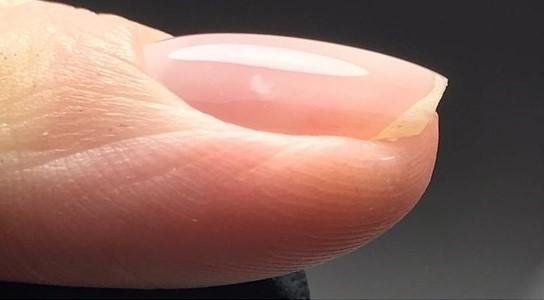
In pursuit of ideals, we resort to extension methods: eyelashes, hair, nails and everything that can be extended. But what's good is what's done in moderation. For example, long-term nail extensions lead to brittleness and dryness. Therefore, the question of how to make nails thicker is especially acute, and if there is a question, then there is a solution!
Some people naturally have thin and brittle nail plates - in this case it is not a matter of restoration but of improving the original material, in such cases additional care works wonders.

Color coating
Decorative varnish is the most visible coating in manicure, represented by a wide selection of colors and textures. With the help of pigmented gel polishes, you can create absolutely any effect and design on your nails without much effort.

Let's consider the technique of applying the first layer of decorative varnish:
- We check the base coat for deep unevenness, buns, hairs and bubbles. If there are any imperfections, then after applying pigmented varnish they will be even more noticeable.
- If desired, you can remove the sticky layer from the base coat.
- Place the colored material on the brush and remove the excess from one side.
- Place the brush on the coverage area at the correct angle. We reviewed these techniques at the beginning of the article.
- When moving, adjust the pressure on the brush and monitor the wave of the material so that longitudinal clumps and bald spots do not form.
- We smooth the material evenly and let it level out.
- Dry it in a lamp.
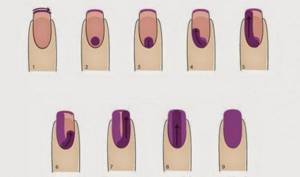
For deep color, it is better to apply several thin layers, drying each of them in a lamp. If you initially chose a varnish with a dense, rich pigment for your manicure, then you can use the following technique:
- Apply a thin, even layer of color as close to the roller as possible, but do not dry it in a lamp.
- We put an additional amount of color on the brush and add it to the wet first layer, that is, we put a drop.
- Distribute over the surface as for leveling.
- We turn the finger at an angle of 45 degrees to the table surface for 10 seconds so that the varnish is concentrated at the apex.
- Then we check for the presence of buns.
- Dry it in a lamp.
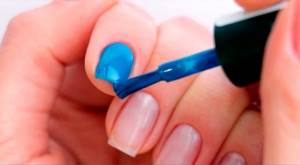
Thanks to this method, the time for applying pigmented material is reduced and the architecture of the nail plate is improved.
If you have chosen pastel-colored material for your decorative manicure, then you should take into account some important points:
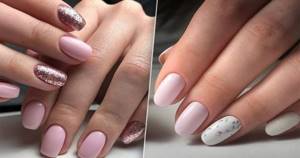
- Before applying the pastel, make sure that the alignment is done well;
- Under the pastel you need a base of white or camouflage base. If you don’t want to make a backing, then you need to remove the top sticky layer;
- Apply pastel with a plastic brush with an even cut;
- Maintain the correct angle of placing the brush on the surface of the nail;
- Avoid pushing from afar;
- There should be a medium amount of material on the brush;
- We smooth out the pastel exclusively with long vertical strokes and at a fast pace. You can't work with pastels slowly;
- Also, do not press the brush too hard into the pigment.
Pastels from Lunail have proven themselves to be very effective in their work, they are perfectly pigmented with beautiful shades and are easy to apply.
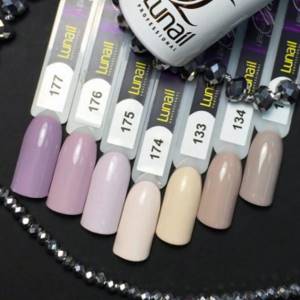
Preparing tools
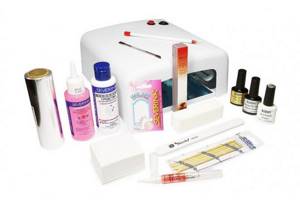
See also...
✅ How to remove gel polish yourself?
✅ Nail design with gel polish: popular styles and designer new items
✅ How to do a French manicure: 4 ways
✅ How to do a manicure with shellac at home?
In order to get your nails in order and make an interesting manicure at home, you need to prepare certain tools and materials. It’s better, of course, not to choose the cheapest ones, otherwise a number of problems may arise and it will end up being more expensive. Everyone knows the saying “the miser pays twice.” It is recommended to carefully read the characteristics of the purchased tools and customer reviews. Next, we’ll tell you what tools you’ll need for a home manicure.
UV lamp (ultraviolet lamp) for drying nails. Nowadays, 36-watt lamps are mainly used in beauty salons and at home. They allow you to significantly speed up the drying process to 1-2 minutes. Some have a built-in fan, but this is not a required feature. The price range varies from 1100 rubles to 7000 rubles. There are also economical options of 9 watts up to 1000 rubles, but they dry one element much longer.
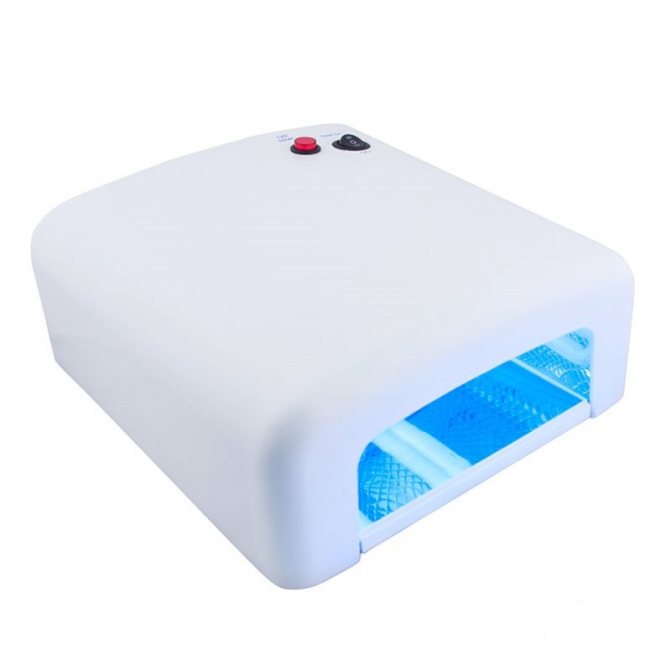
Manicure set , which includes scissors, nippers, double-sided cuticle pusher or orange sticks.
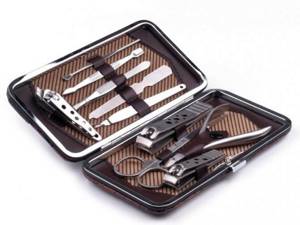
Polishing file – buff with a hardness of 900 grit. This file is used to polish the nail plate to improve the quality of adhesion to the gel polish.
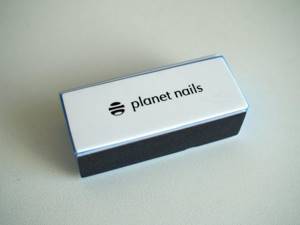
Files for filing nails are often chosen in the shape of a boomerang . The gradation of hardness (grain) is important here. For natural nails, files with high abrasiveness, at least 500 and above, are preferred. For extensions, take more grainy files from 100 grit to 180. 4-sided files are very convenient. They are used for both grinding and polishing.

You can purchase an inexpensive manicure milling machine with various attachments for processing nails. Simple devices are suitable for home use, the price of which ranges from 1,700 rubles to 5,000 rubles. Power ranges from 18,000 to 25,000 rpm. Professionals use devices whose power ranges from 30,000 rpm. The most popular brand is Strong.
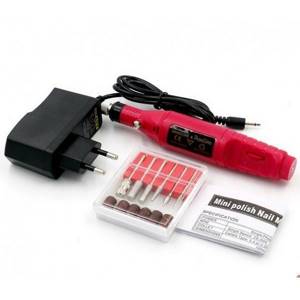
Thin, lint-free wipes are needed to remove excess material or sticky layer after drying.
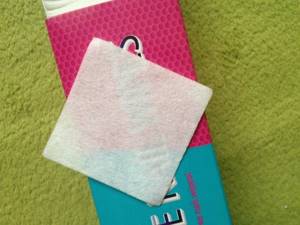
Top coating
The last thing to apply to a decorative manicure is a top coat. It is also called finishing because it is applied to the nails last. It protects color from mechanical stress, makes nail art durable and gives an additional effect. It can be dazzling shine, matte, quick drying or glow in the dark. The top should not be too liquid in consistency, otherwise it will quickly drain and you won’t be able to apply it carefully on your nails. Therefore, pay special attention to this.
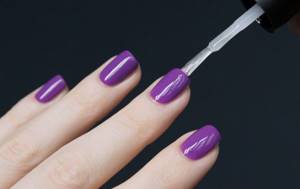
If you are confident in the correctness of the architecture, you don’t want to change anything, everything suits you, then you can apply the top coat thinly to the entire surface of the nail plate and hold it in the lamp until it dries completely. But you can also use the additional leveling technique, which will beautifully complete the architectural process and give the color coating depth and shine:
- Apply the first thin layer to the entire colored nail surface;
- Near the cuticle we paint with a pushing movement of half a millimeter;
- Do not dry in a lamp;
- Immediately place a drop in the hole area and flatten it left and right;
- We make a pushing movement forward, and then pull the material towards ourselves;
- We level it with light flat movements and turn it over at an angle of 45 degrees, hold it like this for 10 seconds;
- We send it to a LED lamp for complete polymerization for 30-60 seconds.
- After drying, wipe the nails with a lint-free cloth soaked in cleanser.
What is a sticky layer and means for removing it
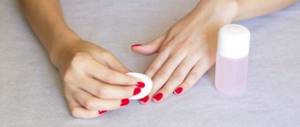
Manicure ideas
If you like an original and beautiful manicure, then the perfect solution would be to create various designs on top of the base. Here are some nail decoration ideas that you can easily do at home:
- Fashion lovers will love the design, which combines different shades. Here one nail may stand out, contrasting in color with the rest. You can combine two or three colors on your finger at once. Patterns made with a thin brush will be very useful;
- Rhinestones or stones, which are suitable for both multi-colored and plain manicures, will help make your manicure even brighter and more unusual. The decorations are attached to the surface of the nail using special glue. If it is missing, then you can glue them onto a sticky layer of varnish that has not yet dried. Then all this is dried in a UV or LED lamp and a top coat is applied;
- Rubbing will give your manicure a neat look. It hides unevenness and other imperfections. The design will look modern with the use of neon shimmer;
- Glitter powder. With a thin brush, you can apply crumbly small glitter in the form of some kind of pattern or simply cover the entire nail with it. The powder is applied before the gel polish has dried, then it is secured with a top coat.
Proven top coatings
- Klio Brilliant Top – glossy, without a sticky layer, flexible, does not distort the shade of the decorative coating, does not chip or crack after drying;
- One Nail top Cristal – rubbery, glossy, without a sticky layer, does not bubble, does not crack, quickly self-levels;
- Linto Top – glossy, with a sticky layer, with a convenient brush, easy to apply;
- AmiLac Gel Top - without a sticky layer, used for an even more solid architecture, perfectly holds decorative manicure until correction or removal;
- One Nail No Wipe Top – without a sticky layer, easy to apply, flexible, gives super shine to nails;
- Nail Club Velvet Top is a matte top; it cannot be applied in a thin layer because it will rub off quickly when it dries. Under it, either a top with a sticky layer is used, because without a sticky layer the matte top will quickly slide off, or a glossy top is applied, treated with a buffer, and only then this matte is applied.
About the 10 best top coatings and how to choose the right one:
Types of topcoats: how to choose a topcoat, review of the 10 best brands
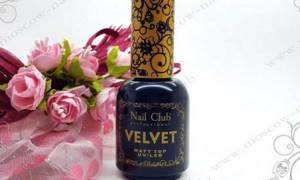
We looked at paint areas and the features of working with them, as well as techniques for applying basic coatings when creating a manicure. The most important thing is to follow the sequence of layers, then nail art will delight you with neatness, freshness and shine for a long time.
Write in the comments what top coats you usually use and do you have any favorite pigmented varnishes, from which brands?
Comment

